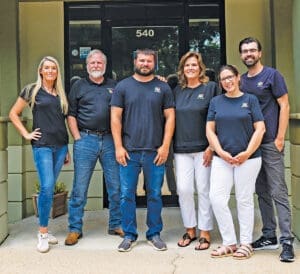As most of us likely learned in grade school, oxygen is vital for the survival of most living organisms. Oxygen is essential as cells cannot produce the energy needed to perform basic functions such as movement, thinking and digestion without it. But what happens when the simple act of breathing becomes too difficult? Unfortunately, this is a reality for an estimated 1.5 million people in the United States. The cause of breathlessness varies from person to person, but can be contributed to a variety of disorders including asthma, COPD, emphysema, lung disease and more. In many of these cases, the patient’s doctor will prescribe oxygen therapy.
According to the American Lung Association, oxygen therapy can help decrease shortness of breath. And though it may not take away the breathlessness completely, it can help patients resume daily living activities more safely and comfortably. It can also help patients feel less fatigued, sleep better, and be more independent and active in general. But what does oxygen therapy look like?
Medical grade oxygen is considered a controlled substance in the U.S., meaning that it requires a prescription from a healthcare professional before it can be dispensed. To determine which type and how much oxygen is right for you, your doctor will perform a variety of tests. Your provider will then issue the certificate of medical necessity which will be sent to an oxygen supplier. The type of home oxygen delivery system that is right for you is based on how much oxygen you need, your lifestyle and insurance coverage.
Each type of oxygen delivery device has a setting or an “oxygen flow rate,” which is the number of liters of oxygen flowing per minute (this is set by your doctor and should not be changed without the consent of a healthcare professional). Home oxygen concentrators are large units that are kept relatively stationary in your home. These devices convert room air into pure oxygen by removing nitrogen and other gasses. A portable oxygen concentrator works similarly, but is much smaller and more portable. It is ideal for a traveler or for a patient with an active lifestyle. Compressed oxygen in a metal tank is a common oxygen delivery device. The tanks come in different sizes, but the smaller the tank, the less oxygen is in it. Gauges on the tank are used to control the flow rate. Face masks and nasal cannulas are most commonly used to deliver the oxygen to the patient through their nose or mouth.
There are some considerations to take into account when using oxygen therapy. For example, special care must be exercised storing oxygen as it must be away from heat, and tanks must be stored upright. Additionally, access to electricity will be imperative for an oxygen user. So, power outages need to be carefully addressed in areas that experience severe weather. Using petroleum-based products can also pose a danger to an oxygen patient as the interaction can cause skin irritation or burns.
Being prescribed oxygen can be overwhelming, but finding an oxygen supplier that is committed to your success will help! J&B Medical is a local, family-owned business that has been providing oxygen to our community for over two decades. We are here to answer any questions you may have about oxygen therapy for yourself or a loved one. Stop by for more information at 540 E. John Sims Pkwy. in Niceville, Monday – Friday from 9 a.m. – 5 p.m. Or call 850-729-2559. We are here to help you!































































